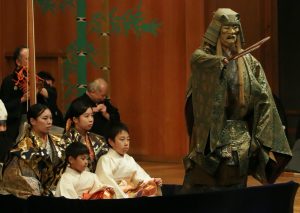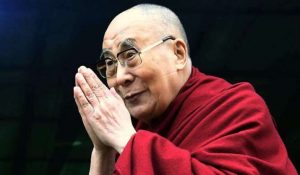
Asian meditation and movement forms rely on the cultivation of stillness. For a Japanese Noh actor, or a Sufi dervish, stillness isn’t simply the absence of movement; it’s a potent presence, a source of power and grace that imbues movement with depth and meaning. Think of a tranquil lake. On the surface, it appears still, yet beneath, currents gently swirl, life pulsates. So too, the dancer in stillness. Although physically unmoving, dancers vibrate with an inner intensity, a wellspring of potential waiting to be expressed. This stillness is not static; it’s dynamic, poised on the brink of transformation.
When a Noh actor stops in the dance; when the dancers in bugaku stop in their ritual; when monks in the Himalaya halt the moving mandala of bodies; when Balinese dancers stop in their devotions, it is electrifying. The stillness belongs to the movement. The inner drama, meditation, visualization, never stops. In fact, in Noh, when a character is overcome with their spiritual burden, the dance will stop, inviting the audience to enter into the pulsing, spiritual reality of the character, producing an energetic imprint on space itself. In an art form where time and space are dilated and manipulated, shared silence and stillness provide a transcendence of the distinct art forms themselves.
In Buddhist meditation, we train the mind to observe the ever-changing activity of thoughts and emotions, cultivating a calm amid an inner storm. Similarly, the dancer cultivates stillness within the body, quieting extraneous movements and tuning into the subtle pulses of breath and energy flow. For a dervish dancer spinning, this still point is essential even for the physics to work. For a masked Noh dancer, this internal stillness becomes the anchor, the self-identifying foundation upon which movement acquires clarity and precision.

Taoist practices such as tai chi, bagua, and Swimming Dragon qigong offer another perspective. They teach us to flow with the currents of life and nature, embracing both yin (stillness) and yang (movement) as part of a cyclical dance. Often mimicking—or embodying—the eight basic energies of the I Ching, the martial artist who draws inspiration from this philosophy moves with fluidity and ease, each gesture harmonizing with the rhythm of breath and the flow of energy through the body. Silence and stillness are elements of the harmony. Where there are stops in gagaku music, the stops and silences must be understood as part of the music, indeed a type of music.

When I first worked with monks in Ladakh at Lamayuru Monastery, I noticed that large mandala dances, some lasting as long as an hour, stopped in certain places: the whole circle of up to 24 dancers came to a precise halt. I learned later that these halts are part of the dance, and that they are called “stops.”
Moving with stillness shows how stillness manifests in actual movement. Each type of embodied stillness-in-action cultivates a different and necessary condition of mind, usually based on the speed of the movement. In slow ritual forms, a slight shift of the head, a subtle breath-infused gesture or mudra; a pause pregnant with emotion and exposition—these can ripple with potent energy, speaking volumes even in the absence of grand leaps or acrobatic feats.
Stillness becomes evident, even as the empty spaces become alive. Stillness allows the dancer to focus on the cultivation of mind while moving; a familiarity with the pulsing reality of stillness. Movement is linked with the intention behind each gesture, making every action deliberate and imbued with meaning. For a Japanese Noh dancer, their movements measured and precise, stillness is imbued with a quiet power. It’s been said that the slow speed of Noh is a factor allowing the actor to develop such intricate and masterful mental techniques. In other words, to sustain the connection with vibrating stillness.
Alternately, stillness is an essential agent of mental mastery in dances that are fast, athletic, or physically complex. A Sufi dervish whirling; or a Himalayan monk gyroscopically turning in a vortex—these both rely on a stillness at the center of the spin radiating outward, drawing the audience as well into their vortex of devotion. A stillness of mind is the only foundation for the unbroken concentration on the mental techniques required to propagate the symbolic power of the figure.

Stillness in movement isn’t only about inward focus. It also allows the dancer to be fully present in the space, attuned to the environment and the audience. A dancer who embodies stillness commands attention through an understated, almost magnetic presence, whether sailing along calmly or bursting into bombastic displays that disappear as all phenomena does, reverting to stillness.
Stillness is not the opposite of dance; it’s the secret weapon. It’s the fertile ground from which captivating movement blossoms, the hidden rhythm that drives the dancer’s artistry. So my wish for all my readers as we embark on this new year of 2024 is to embrace the stillness, cultivate it within, and let its quiet power guide your own dance to new heights of expression and grace.

See more
Related features from BDG
Monastic Dance Courtyards in Ladakh and Zanskar
Nabji, Part One: Bearing Relics
Dance Survival












